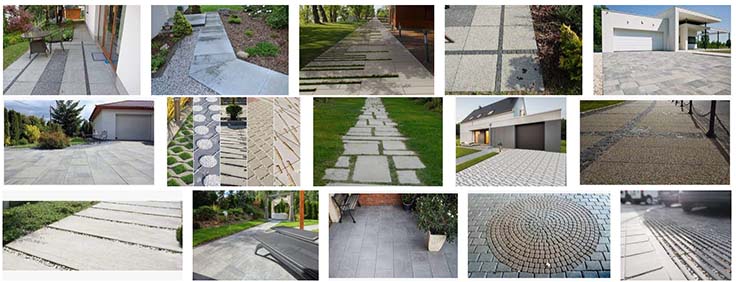 Cement concrete surfaces should be very carefully made, which refers both, For the selection of concrete ingredients, as well as to lay it. Incorrectly made surfaces made of prefabricated concrete slabs or wet concrete are easily destroyed by weather conditions. The destructive effects of atmospheric factors are primarily in the crushing effect of ice formed in the times of too absorbable concrete. Such pores may arise as a result of the use of too little cement, wrong aggregate, np. soaked brick crushed stone and due to insufficient density (np. improper vibration) concrete mixture. The operation of low temperatures also causes stress concrete, which can cause cracks and crevices. The water that gets into the crevices after freezing usually causes further crushing and cracking of concrete. The plates too thin in relation to their length can easily be fractured as a result of the formation and growing under them ice crystals formed from condensing water vapor. These phenomena occur in autumn and early winter, When the disc is frozen, and the ground temperature is still positive.
Cement concrete surfaces should be very carefully made, which refers both, For the selection of concrete ingredients, as well as to lay it. Incorrectly made surfaces made of prefabricated concrete slabs or wet concrete are easily destroyed by weather conditions. The destructive effects of atmospheric factors are primarily in the crushing effect of ice formed in the times of too absorbable concrete. Such pores may arise as a result of the use of too little cement, wrong aggregate, np. soaked brick crushed stone and due to insufficient density (np. improper vibration) concrete mixture. The operation of low temperatures also causes stress concrete, which can cause cracks and crevices. The water that gets into the crevices after freezing usually causes further crushing and cracking of concrete. The plates too thin in relation to their length can easily be fractured as a result of the formation and growing under them ice crystals formed from condensing water vapor. These phenomena occur in autumn and early winter, When the disc is frozen, and the ground temperature is still positive.
The most common error when making concrete surfaces is the improper preparation of the substrate. If the substrate has not been sufficiently thickened, Its gradual uneven settlement is caused by the uneven support of the plates, And this usually leads to breaking the plates even under a low load. Similar effects occur in the event of uneven distribution of the bedding under the plates, for always when the disc is not based on the entire surface, it can break easily.
The reason for the destruction of the concrete surfaces may also be their useless use, most often in overloading them. Overloading causes the concrete slabs into the ground, which is usually the cause of breaking and crushing the plates.